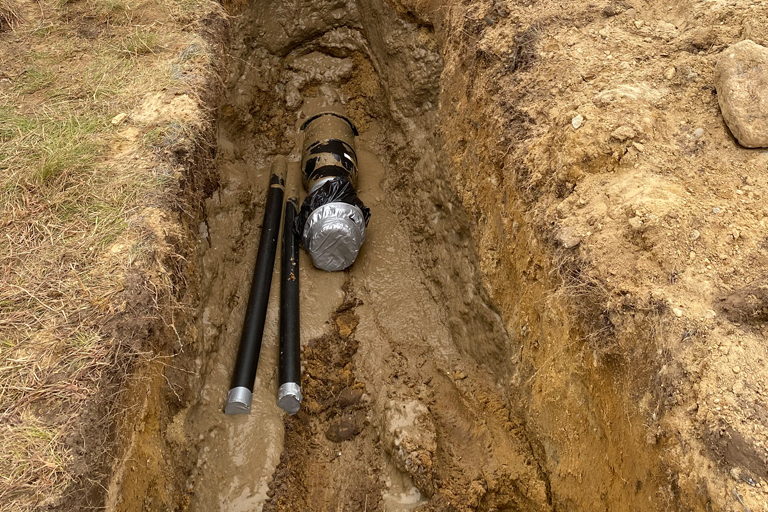
If you’re running a pump and treat system, you likely have a large mass of contamination to remediate. In order to get the most out of a pump and treatment system, the extraction rate of contaminated groundwater must be high. By following the geometry of groundwater plumes, rather than working against it, horizontal wells can remove significantly more water from the ground for treatment.
A pump and treat system is a common method used in groundwater remediation to remove harmful contaminants from the subsurface. First and foremost, it works by installing extraction wells directly into the groundwater to remove contaminated water through a system of downhole pumps. This water is then treated above-ground through various methods, including air stripping, granular activated carbon (GAC), bioreactors, and more. Once treated, the water is either reinjected back into the subsurface or discharged into surface water bodies, like lakes or rivers.
When it comes to pump and treat systems, the goal is simple: pull large volumes of contaminated water out of the subsurface for treatment. There are only two options when it comes to the extraction phase, vertical or horizontal. Vertical wells certainly have a time and place, but a system of horizontal remediation wells is truly elite for this remedial application. Horizontal wells can extract significantly more volume in less time due to the increased linear screen footage per well, which can contain hundreds of feet or more. Due to this increased yield, one horizontal well can often replace several proposed vertical wells for extraction purposes.
In order for a pump and treat system to reach peak performance, the contaminated groundwater must be precisely targeted in the subsurface. It is rare that contamination is more vertically extensive than laterally, meaning vertical wells may have difficulty putting enough screen in direct contact with the contamination. Or it may require an entire system of several vertical wells to provide sufficient coverage. Groundwater contaminant plumes often take a long, ellipsoid shape in the subsurface. Through horizontal directional drilling techniques, horizontal remediation wells are installed following the exact geometric orientation of the groundwater plume. This way, the contaminated groundwater is targeted and extracted, minimizing the accidental removal of clean water.
By installing a second horizontal well, the reinjection rates can keep up with the massive removal volume of the extraction well. As a result, significantly more water can be extracted, treated, and reintroduced to the subsurface through a horizontal pump and treatment system.
Horizontal wells are the superior method when it comes to pump and treat remediation systems. Through increased screen and precision targeting, horizontal remediation wells can treat significantly more contaminated groundwater than traditional vertical systems.
77 N. Plains Industrial Road
Wallingford, CT 06492
Over 5,000 Horizontal Remediation Wells Installed Worldwide
NAICS Codes: 237990 Heavy Equipment & Horizontal Drilling • 237110 Water & Sewer Line and Related • 541620 Environmental Consulting Services for HRW Screen Design • 237130 Underground Cable Lying & Utility Line Construction
Copyright 2025 Directional Technologies, Inc. All Rights Reserved.